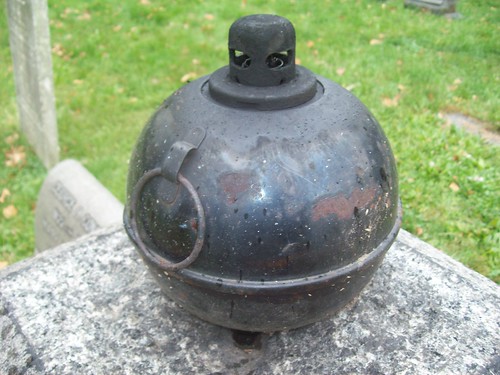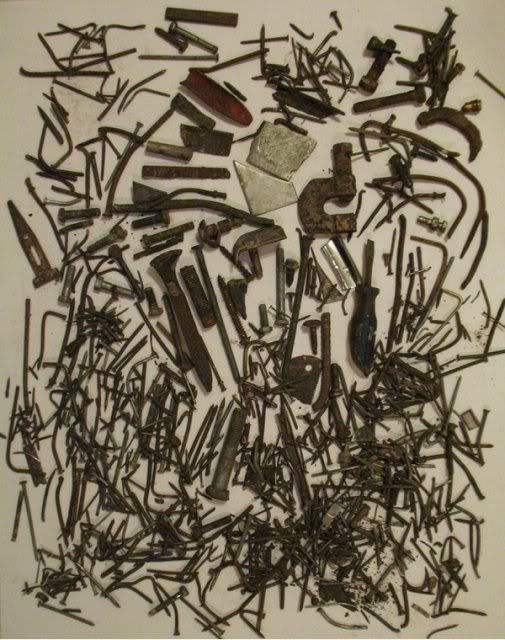Ok if your, older then you remember how they use to fix flats on innertubes. They clamped this triangle metal plate with the patch on one side and this burning stuff on the other. Then they lit the stuff and it got that plate hot and made the patch to the innertube. That stuff smelled so cool. Wonder if you can still buy those?....They sure beat these little sticky worthless patches they make now. :wink:
You are using an out of date browser. It may not display this or other websites correctly.
You should upgrade or use an alternative browser.
You should upgrade or use an alternative browser.
Old Style Patches
- Thread starter Uncle Stretch
- Start date

Help Support Rat Rod Bikes Bicycle Forum:
This site may earn a commission from merchant affiliate
links, including eBay, Amazon, and others.
I saw a thread at bikeforums about this and none of those guys new where to purchase new, but a few has left over supplies. I tried my google powers and couldnt find much except for bias ply farm tires. I would like to try some though.
I went into a very nice bike shop and all they had were those glueless patches. Last time I went there looking for anything. The glued patches(cold vulcanization) work pretty well.
I went into a very nice bike shop and all they had were those glueless patches. Last time I went there looking for anything. The glued patches(cold vulcanization) work pretty well.
I'm 49, and remember my Dad using those patches once or twice when I was little kid. I wasn't aware of any big advantage to them other than getting to play with fire when you fixed a flat.
Now, when was the last time you saw a smudge pot?
Now, when was the last time you saw a smudge pot?
Tha advantage was that they stayed in place and didn't leak. When I was a kid in the early 60's, the Mobil gas station fixed bike flats for kids. Can't remember but it was either 25 or 50-cents...and if they weren't too busy they'd even take it off the bike and remount it for you. They always used the hot patch method. The guy would spread some stuff on the tube then light it, blow it out, and stick the patch on with a clamp. Fixed. I had tubes on my first bike that had a dozen patches on them in red, black, and green.
Try this to patch a tube: Rough up the spot to be patched and clean it with laquer thinner. Put a dab of Permatex Ultra Black RTV silicone gasket maker on the spot and spread it out a bit. Let it dry 24 hrs. I did a patch this way on a tube 10 yrs. ago and it's still holding air. Gary
Try this to patch a tube: Rough up the spot to be patched and clean it with laquer thinner. Put a dab of Permatex Ultra Black RTV silicone gasket maker on the spot and spread it out a bit. Let it dry 24 hrs. I did a patch this way on a tube 10 yrs. ago and it's still holding air. Gary
I stuck air in 8 tubes yesterday. After about an hour there were 2 that still had air in them. That is sad. Seems like those patches were made by camel. The only advantage was they vulcanized the patch to the tube.Never had one leak. I think the ..put the glue on and light it on fire and stick a patch on was the next generation of patches. If I remember they worked pretty good too.
I like this from a how to on fix flats except he calls it contact cement. The Rema Tip Top patch kits are the best and come with Vulcanizing Fluid.
4. Let the glue dry fully. Really! This kind of glue, also called contact cement(Vulcanizing fluid), must dry completely before applying the patch. Many people are confused about this and do strange things including setting the glue on fire!
Here is great tutorial too. http://bicycleuniverse.info/eqp/fixflat.html
What causes your flats down there? Most of mine come from Goat heads or puncture weed.
4. Let the glue dry fully. Really! This kind of glue, also called contact cement(Vulcanizing fluid), must dry completely before applying the patch. Many people are confused about this and do strange things including setting the glue on fire!
Here is great tutorial too. http://bicycleuniverse.info/eqp/fixflat.html
What causes your flats down there? Most of mine come from Goat heads or puncture weed.
I still have an old tube clamp for the hot patches. Camel was one of the last companies that made them but they recalled all hot patches back in the 1980's due to issues with asbestos. Might still be some left over in some old shops? They did have a unique smell when they burned.
CCR
Mouth-Breather
I'll usually replace the tube and patch the old one to use later, does anybody clamp theres down overnight ? usually use 2 paint paddles and a pair of vice grips and leave it over night, i started sticking a paper towel on the glued side though after i glued a paddle to a tube and it peeled the patch up with it :roll: doesnt look as clean but the tube gets stuck in a tire and noone sees it, and the patches usually hold 99% of the time after doing so.
StephenH said:Now, when was the last time you saw a smudge pot?
I remember seeing smudge pots in the mid 70's as a kid (I'm 40 now).

I suppose I'm not old enough to remember hot patches...my father never used them to repair the tubes in my bikes as a kid.
Hey Clancy I'm not sure what causes things to go flat here. We really dont have any thorns around. They just seem to get holes.
.....Smudge pots...ahhh the memories. It was probably cheaper to add some karosene than to change all the batteries in the flashing lights they use.
.....Smudge pots...ahhh the memories. It was probably cheaper to add some karosene than to change all the batteries in the flashing lights they use.
The patches I remember were diamond-shaped, and the flaming stuff was made into a diamond metal holder.
I had forgotten the Rema brand, but that's what we used on truck tires when I was working at the dump-truck place. Great stuff. Where can you buy them?
Normal process with the patches: Rough up the tube, apply the cement, let the cement dry, apply the patch, work it down good onto the cement. I normally try to have the tube aired up to the size it is in the tire when I put the patch on. Patches on the inside surface don't often work well.
One issue is that they sell some of the one-size-fits all tubes that have to stretch a lot when they're inflated in the tire, and that makes it harder to get a patch to hold.
This is the bucket of stuff I pulled out of truck tires. Actually, this is only part of it, because about half the flats were due to rocks working their way through, or no object still in place, and I only saved the metal stuff.

I had forgotten the Rema brand, but that's what we used on truck tires when I was working at the dump-truck place. Great stuff. Where can you buy them?
Normal process with the patches: Rough up the tube, apply the cement, let the cement dry, apply the patch, work it down good onto the cement. I normally try to have the tube aired up to the size it is in the tire when I put the patch on. Patches on the inside surface don't often work well.
One issue is that they sell some of the one-size-fits all tubes that have to stretch a lot when they're inflated in the tire, and that makes it harder to get a patch to hold.
This is the bucket of stuff I pulled out of truck tires. Actually, this is only part of it, because about half the flats were due to rocks working their way through, or no object still in place, and I only saved the metal stuff.





